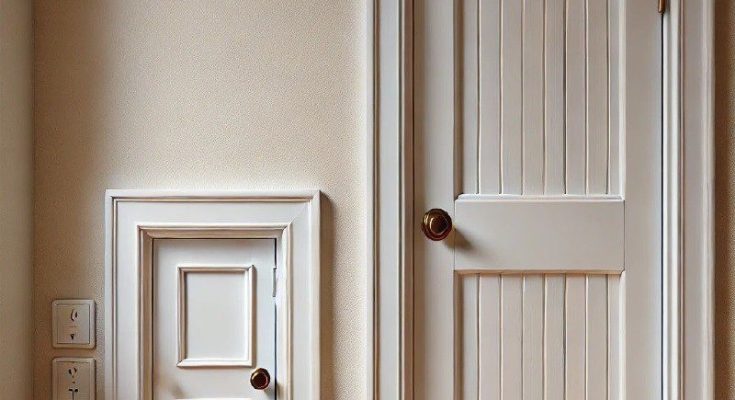If you’ve ever explored a house built before the 1950s, you might have noticed a small, mysterious door tucked inside a closet. These little doors have long puzzled homeowners and history enthusiasts alike. What were they for? How did they end up in the design of older homes? While theories of hidden passages and secret compartments often come to mind, the true purpose of these tiny doors is much more practical.

Misconceptions About the Tiny Doors
One of the most common misconceptions about these small doors is that they were created as hidden pathways or secret hideaways. While the idea of secret rooms adds an element of intrigue, the reality is a bit more mundane. Some people also assume that these doors were designed for luggage storage, given their proximity to closets. However, this theory doesn’t hold up, especially since vintage suitcases were bulky and lacked wheels, making them too large to fit behind such a small door. Other possible explanations include storage for linens or even ironing boards, but these ideas also miss the mark.
The Real Purpose of the Small Doors
So, what was the true purpose of these small doors? In the 1950s and 1960s, the answer was surprisingly simple: card tables.
During this era, card games were a popular form of entertainment. Families and friends frequently gathered to play games like rummy, bridge, or poker, creating a lively atmosphere of fun and competition. However, card tables posed a practical problem—when not in use, they were bulky and took up valuable space in the home.
How the Tiny Doors Solved the Problem
To address this issue, architects and designers came up with a clever solution: the small door inside the closet. This little door created a compact storage space specifically designed to fit folded card tables. By placing these small doors in closets or hallways, homeowners could conveniently store their card tables out of sight while freeing up space in the room.
The design was both practical and efficient, reflecting the mid-century emphasis on functionality in the home. It allowed homeowners to make better use of their living spaces without having to deal with large, cumbersome tables. When it was time for a game night, all they had to do was retrieve the card table from behind the small door and set it up.
The Role of Card Games in Mid-Century Life
The popularity of card games in the mid-20th century can’t be overstated. Playing cards was a favored pastime, whether it was for serious competition, casual fun, or even a bit of gambling. In many households, card games provided a chance to socialize, entertain guests, and enjoy some downtime. The compact design of card tables made them easy to set up for an evening of games and equally simple to store when not needed.
The little doors found in pre-1950s homes were a direct response to this lifestyle trend. They offered a clever, space-saving solution that complemented the frequent gatherings centered around card games. These tiny doors were more than just a quirky feature; they were a practical part of home life during a different era.
Why the Tiny Doors Have Faded Away
As lifestyles changed, so did home design. By the late 20th century, the focus shifted away from card games as a primary form of entertainment, leading to changes in how homes were built. Larger living rooms, finished basements, and designated game rooms became more common, making the small doors for card table storage obsolete. Modern furniture also evolved, with foldable tables becoming more compact and easier to store in traditional closets or under beds.
Today, these small doors serve as a fascinating glimpse into mid-century home design. They remind us of a time when architects designed homes with specific lifestyles and activities in mind. While the doors might appear mysterious to modern homeowners, their original purpose was quite practical and tailored to the social habits of the era.
Conclusion
The tiny doors hidden in older homes are a charming piece of architectural history. Far from being secret passageways or storage for clandestine items, they were designed to accommodate card tables—a common fixture in mid-century social life. As card games brought people together, these little doors provided a convenient storage solution that kept homes tidy and functional.
So, the next time you come across a small door in a pre-1950s house, you’ll know its true purpose. It’s a reminder of a bygone era when card games reigned supreme and home design catered to everyday life in the most creative ways.



